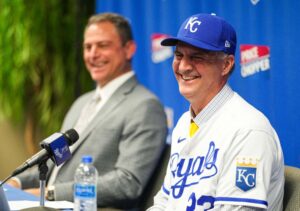One of the most interesting elements of spring training every year, at least for those of us who feast on roster construction minutiae, is the collection of players who are out of minor league options. MLBTR just released a full list of such players earlier today.
In many instances, a player being out of minor league options is inconsequential. Justin Steele, Isaac Paredes and Evan Phillips are among the players who fit that description but are in no risk of losing their MLB roster spot. They're all key players on big league rosters who'd never be in danger of being sent down to the minors anyhow.
However, there are typically a handful of players every spring who are on the roster bubble with their current club but who could be a better fit on a team with less competition in their current position. Most of these players have already had big league opportunities with their current club but whether due to injury or poor performance (or both) have yet to firmly seize hold of a roster spot. As players exhaust their minor league options, they'll tend to face increased competition from younger players progressing through the minor league ranks and/or external additions made via trade or free agency. An out-of-options player who doesn't fit his current roster can still go on to find a more solid role and some success elsewhere. Joey Bart was in just this spot last year and after being squeezed out in San Francisco has emerged as Pittsburgh's starting catcher. The Yankees didn't have a spot for Ben Rortvedt, but he's the Rays' clear No. 2 catcher now.
Let's run through 10 names to keep an eye on this spring. Not all of these players will lose their roster spots, and even some who do might not wind up making an impact elsewhere. But each of the names listed here has some reason to hold a bit more intrigue than many of their out-of-options brethren (players listed alphabetically)...

Unlock Subscriber-Exclusive Articles Like This One With a Trade Rumors Front Office Subscription
- Access weekly subscriber-only articles by Tim Dierkes, Steve Adams, and Anthony Franco.
- Join exclusive weekly live chats with Anthony.
- Remove ads and support our writers.
- Access GM-caliber tools like our MLB Contract Tracker

